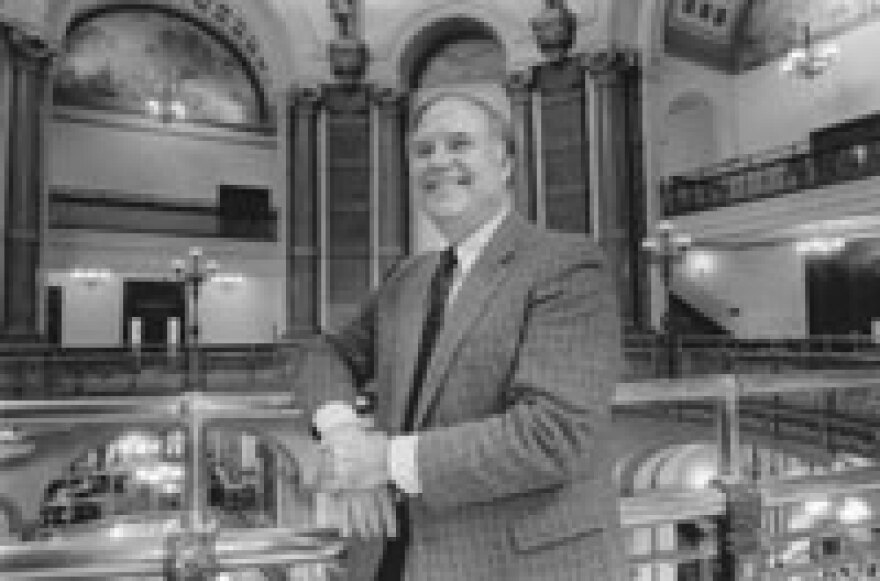Is it, as Yogi Berra might put it, deja vu all over again for state finances in Illinois? Look at what's been happening lately.
- State revenues, especially sales tax receipts, have been less than what lawmakers expected when they put the current budget together last April.
- Medicaid spending has been higher than anticipated, causing state officials to cut costs by reducing reimbursement rates to some providers.
- On some days, the state has had more bills than money in the bank, forcing state Comptroller Daniel Hynes to delay writing checks to some vendors.
If the scenario sounds familiar, it might be because at first blush it bears a striking resemblance to events of a decade ago, when a newly inaugurated Gov. Jim Edgar found the cupboard bare, the bills mounting and the economy headed south.
But a closer look shows there are significant differences between 2001 and 1991.
On the revenue side, a major reason tax collections so far are less than projected in April is an estimated $175 million loss from the six-month suspension of the state sales tax on gasoline and diesel fuel. Indeed, concern about that revenue loss was a major reason the sales tax on motor fuels wasn't abolished completely during the fall legislative session.
Still, revenue projections could be undermined if the economy performs more poorly than expected. Some slowdown already was built into the FY 2001 budget, with forecasters projecting revenue growth of $810 million, less than half of the $1.63 billion average growth for the last two years. Midway through FY 2001, though, general funds receipts stood at $11 billion, according to the comptroller. That's $301 million more than collected in the first six months of FY 2000, but $182 million less than Bureau of the Budget projections made in October, after the first three months of the budget year.
On the spending side, Medicaid ? the joint state-federal health care program for the poor ? is growing much faster than budget-makers anticipated in April, especially in spending for prescription drugs and hospital care. The current budget allocates $5 billion in general funds for medical assistance, enough to cover an expected 6.3 percent increase in spending. Through December, however, spending was up more than 11 percent.
In a sense, the state Department of Public Aid, which manages the Medicaid program, has been a victim of its own success. Its efforts to enroll low-income children in the KidCare insurance program topped expected goals, resulting in higher costs.
In addition, medical inflation, especially for prescription drugs, has grown faster than anticipated. The average cost of filling a prescription has increased 28 percent over the last two years, in large part due to new, more expensive drug therapies, according to public aid Director Ann Patla.
Moreover, better access to health care services has resulted in a higher number of services per client, she noted, with usage rates for hospital, doctor and pharmacy services increasing between 5 percent and 10 percent in recent years.
Thus, FY 2000 ended with about $61 million more in Medicaid bills than projected when the budget was passed in mid-April, creating a greater liability base for FY 2001, Patla says.
To pare Medicaid growth, the department is reducing pharmacy reimbursements by $33 million and hospital payments by $35 million as part of a plan to save $101 million in the current fiscal year. The cuts are expected to save an additional $155 million in FY 2002, including $87 million in prescription costs and $21 million in hospital payments.
Fewer dollars in the bank and more bills than expected add up to a situation familiar to many Illinois families: Not every bill gets paid the same day it arrives in the mail. For the next few months, that's where Hynes expects to be, juggling bills from day to day to cope with a cash flow squeeze. But the delays so far have been only for three or four days, and as spring and income tax time roll around, the problem should disappear.
In fact, budget officials still expect the state to end FY 2001 with $1.25 billion in the bank, $840 million in outstanding bills and a $410 million surplus, marking the fifth straight black-ink year for Illinois. That's a far cry from FY 1991, when the state posted a $666 million budgetary deficit in the second year of a seven-year tidal wave of red ink that crested in FY 1992 with an $887 million deficit. The back-log of overdue Medicaid bills also was growing a decade ago, reaching almost $2 billion in FY 1994 before improving economic conditions allowed the state to catch up by the time Edgar left office.
So, rather than a harbinger of worse times to come, the state's current situation perhaps is seen better as an early warning to which Gov. George Ryan and the legislature can respond in time to avoid serious financial woes.
Certainly, the budget proposal Ryan will unveil in a few weeks will require more difficult choices than his previous two. While revenue growth will slow down in response to a cooling economy, spending pressures keep building, not just for Medicaid, but in other key areas like education and human services.
Meeting critical needs from a smaller pot of new money may be a tough challenge for legislators who've grown accustomed to an open spigot the last two years. But in FY 2002, the state can't afford more tax relief nor another $380 million in "member initiatives," the preferred euphemism for local pork-barrel projects.
The good times have rolled, and now it's the morning after. Heeding the warning signs and embracing fiscal discipline is the best way to ensure that deja vu doesn't happen all over again.
Charles N. Wheeler III is director of the Public Affairs Reporting program at the University of Illinois at Springfield.






